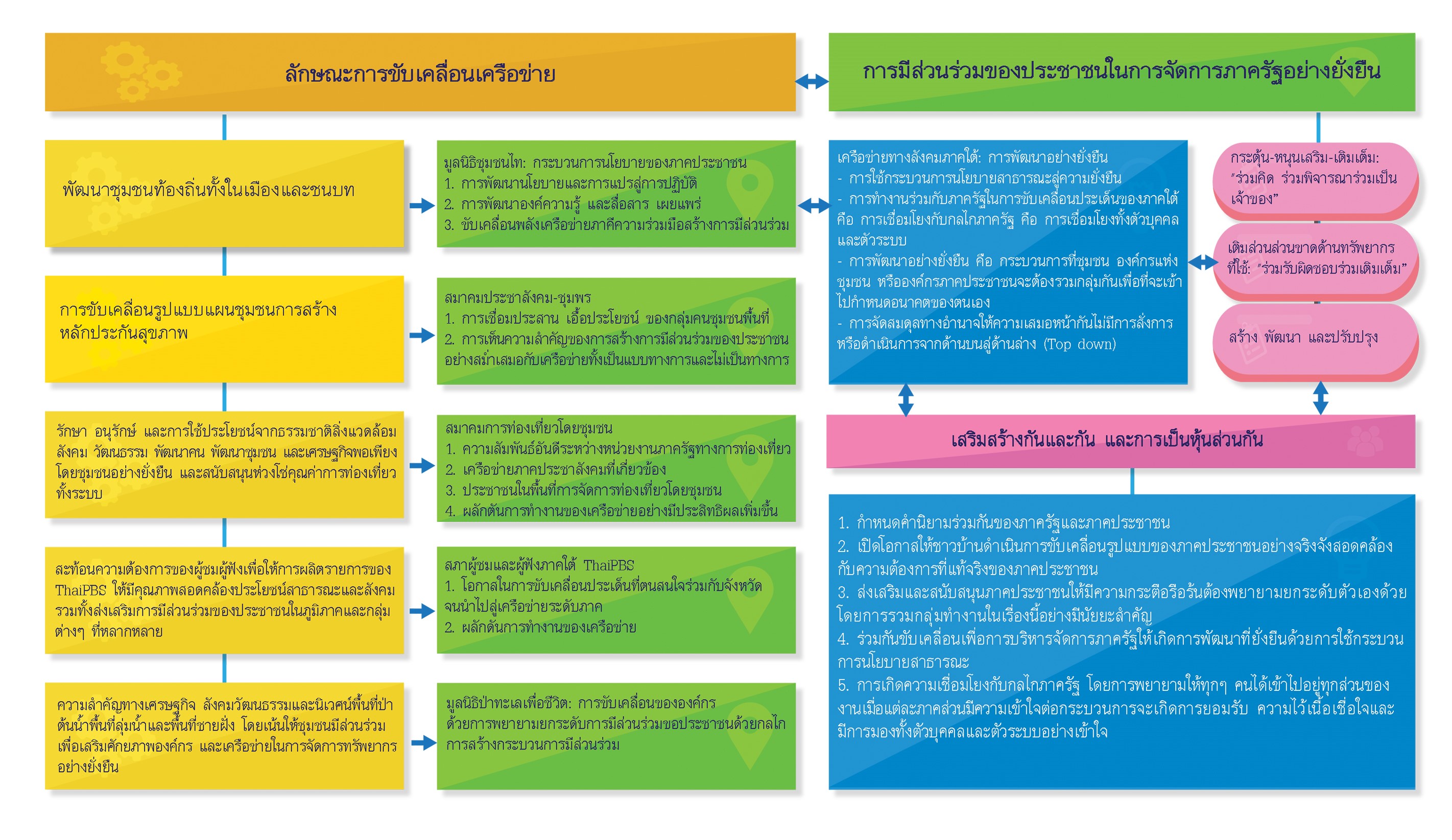SustainableDevelopment ofCollaboration between Civil Society Organizations and the Government Sector in the Southern Region
Main Article Content
Abstract
The purposes of this research were 1) to explore the driving characteristics of the Southern Civil Society network 2) to study the role of the Southern Civil Society network in helping to create and support public participation in sustainable government management 3) to Model of civil society network for managing sustainable development, The research method survey research and qualitative research, The target population is 1) Thai Community Foundation, 2) Chumphon Civil Society Association, 3) Southern Community Tourism Association, 4) Sea Forest for Life Foundation, and 5) Thai PBS Southern Program Viewers and Listeners Council, 5 groups, members providing information, a total of 62 people.
The research results found that:
1. The driving characteristics of the civil society network reveal that the policy process is a form of the public sector. Characteristics emphasize connections to benefit groups of people, communities, and areas by relying on good relationships with government agencies and focusing on enhancing public participation. There must be a mechanism for creating a participatory process and opening opportunities to drive according to the issues that network members are interested in to move from the provinces to the regional network.
2. The collaboration between civil society organizations and the government sector is at a ‘high’ level and is achieved through (1) encouragement, support, and fulfillment (2) contribution in filling shortcomings, and (3) creation, development, improvement, meaning all five civil society organizations help create and support the sustainable development of collaboration with government agencies.
3. The development of a model for sustainable collaboration between civil society organizations and the government sector in the southern region can be achieved through (1) defining common objectives for the government agencies and civil society organizations, (2) giving opportunities to locals to found civil society organizations addressing their needs, (3) the support and encouragement to civil society organizations to help clarify their objectives, (4) applying objectives to public policy, and (5) alignment of objectives with government agencies on every level, and once they all understand each other, they can understand, trust and propagate their objectives together.
Article Details

This work is licensed under a Creative Commons Attribution-NonCommercial-NoDerivatives 4.0 International License.
เพื่อให้เป็นไปตามกฎหมายลิขสิทธิ์ ผู้นิพนธ์ทุกท่านต้องลงลายมือชื่อในแบบฟอร์มใบมอบลิขสิทธิ์บทความ ให้แก่วารสารฯ พร้อมกับบทความต้นฉบับที่ได้แก้ไขครั้งสุดท้าย นอกจากนี้ ผู้นิพนธ์ทุกท่านต้องยืนยันว่าบทความ ต้นฉบับที่ส่งมาตีพิมพ์นั้น ได้ส่งมาตีพิมพ์เฉพาะในวารสาร วิชาการธรรม ทรรศน์ เพียงแห่งเดียวเท่านั้น หากมีการใช้ ภาพหรือตารางของผู้นิพนธ์อื่นที่ปรากฏในสิ่งตีพิมพ์อื่นมาแล้ว ผู้นิพนธ์ต้องขออนุญาตเจ้าของลิขสิทธิ์ก่อน พร้อมทั้ง แสดงหนังสือที่ได้รับการยินยอมต่อบรรณาธิการ ก่อนที่บทความจะได้รับการตีพิมพ์References
กนกวรรณ แสนศรี. (2562). บทบาทและการเคลื่อนไหวภาคประชาสังคมในกระบวนนโยบาย กรณีศึกษาป่าแหว่ง บริเวณเชิงดอยสุเทพ จังหวัดเชียงใหม่. (วิทยานิพนธ์รัฐศาสตรมหาบัณฑิต). กรุงเทพฯ: มหาวิทยาลัยธรรมศาสตร์.
ปทิดา โมราศิลป์ และศิริพร เพ็งจันทร์. (2566). ทุนทางสังคม: การจัดการการท่องเที่ยวบนฐานชุมชนเชิงสร้างสรรค์กรณีศึกษาเมืองโบราณเวียงสระ อำเภอเวียงสระ จังหวัดสุราษฎร์ธานี. วารสารการเมืองการปกครอง, 13(1), 110-133.
วิรัช วิรัชนิภาวรรณ. (2545). การบริหารเมืองหลวงและการบริหารท้องถิ่น: สหรัฐอเมริกา อังกฤษ ฝรั่งเศส ญี่ปุ่น และไทย. กรุงเทพฯ: โฟร์เพช.
ศิริลักษณ์ คัมภิรานนท์ และอัญชนา ณ ระนอง. (2563). ความร่วมมือระหว่างภาครัฐ ภาคเอกชน และภาคประชาสังคมในจังหวัดชายแดนใต้. วารสารวิทยบริการ มหาวิทยาลัยสงขลานครินทร์, 31(1), 1-16.
สภาพัฒนาเศรษฐกิจและสังคมแห่งชาติ. (2560). แผนพัฒนาภาคใต้ พ.ศ. 2560-2565 ฉบับทบทวน. กรุงเทพฯ: สภาพัฒนาเศรษฐกิจและสังคมแห่งชาติ.
สำนักงานคณะกรรมการพัฒนาระบบราชการ. (2565). การบริหารงานภาครัฐแบบมีส่วนร่วม. เข้าถึงได้จาก https://www.opdc.go.th/content/Mjc4Nw
สำนักงานผู้แทนประจำประเทศไทย. (2554). ภาคประชาสังคมในประเทศไทยโดยสังเขป. เข้าถึงได้จาก https://www.adb.org/sites/default/files/publication/29444/csb-tha-th.pdf

